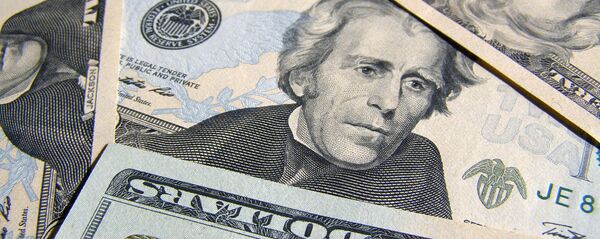Kristian Rouz – Sales of new homes in the US in April advanced to their highest point since early 2008, propelled by labor market gains and a gradual pickup in wages, while housing prices soared to a record highest across select regions.
Consolidation in the real estate segment pushed the PHLX Housing Sector Index higher on Wall Street in Tuesday’s trading, also prompting investors’ demand for US dollars. However, government debt plunged, which is uncharacteristic of this market when participants anticipate a Fed hike. Weak inflation is to blame, although an abundance of overseas risks might still trigger the Fed to postpone raising rates.
According to a report the US Commerce Department released on Tuesday, new home purchases in April jumped 16.6% from a month earlier to a seasonally adjusted annual rate of 619,000 units sold, compared to earlier predictions of 523,000. Average selling price added 9.7% to an all-time high of $321,100 due to gains in jobs and wages amid the still-loose monetary environment and affordable credit. However, sales figures could have been better if construction volumes had posted similar gains; a lack of new home starts staved off some first-time buyers.
In April, the number of new homes available for purchase dropped to 243,000, and at that month’s pace of sales it would hypothetically take 4.7 months to sell them off, compared to 5.5 months in March. This indicator was the main driving force behind gains in home prices last month.
“We have been arguing that the housing recovery will continue over time despite some mixed signals coming across the different housing indicators that we track and today’s report sends a very upbeat message about the strength in home sales,” Daniel Silver of JPMorgan Chase & Co., wrote. “We should caution, however, that the new-home sales data can be volatile and revisions are often meaningful, so the jump in sales reported between March and April likely overstates the underlying strength.”
Therefore, despite providing an overall optimistic outlook on a nationwide level, suggesting the Fed now has yet another reason to hike borrowing costs in June, the housing data contains a rather alarming message: one of the American economy’s non-financial sector pillars, the real estate industry, is posting wild swings month-on-month across regions, statistically disguised at solid and stable gains when seen as a nationwide average.
The Federal Reserve’s sudden hawkishness on monetary policy, revealed by the minutes of the 26-27 April Federal Open Market Committee (FOMC), is still, however, hardly viable as neither inflation nor growth figures are robust enough.
"We still think a rate rise next month is, on balance, unlikely – particularly given the proximity of the next Fed meeting to the UK’s EU referendum. Nevertheless, with recent US data pointing to a pick-up in US inflation and a decent bounce in Q2 economic activity, a move cannot be ruled out," analysts at London-based Lloyds Bank wrote.
Meanwhile, regarding the US housing market developments, Zero Hedge has made a good point, saying that “Americans — the same consumers who, according to recent retail data, are loath to even go out and buy clothes — rushed out to buy new homes in the month when the median new home sale price just hit an all-time high.”
Fixed-asset property investment might be driving the market; however, US treasuries have plunged in value recently, with yields inching up, suggesting higher market volatility, and, again, indicating a June hike is less probable. However, the Fed is poised to keep market participants unaware of their June meeting intentions until after the policy decision is made.





